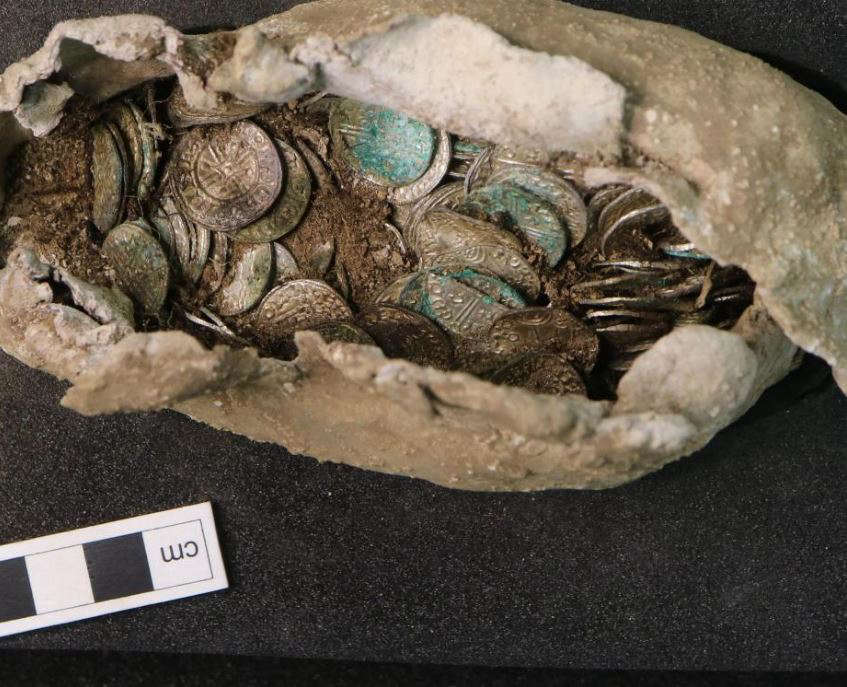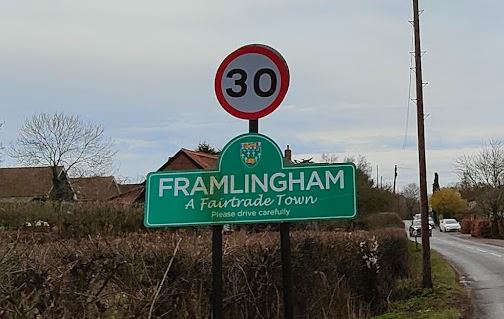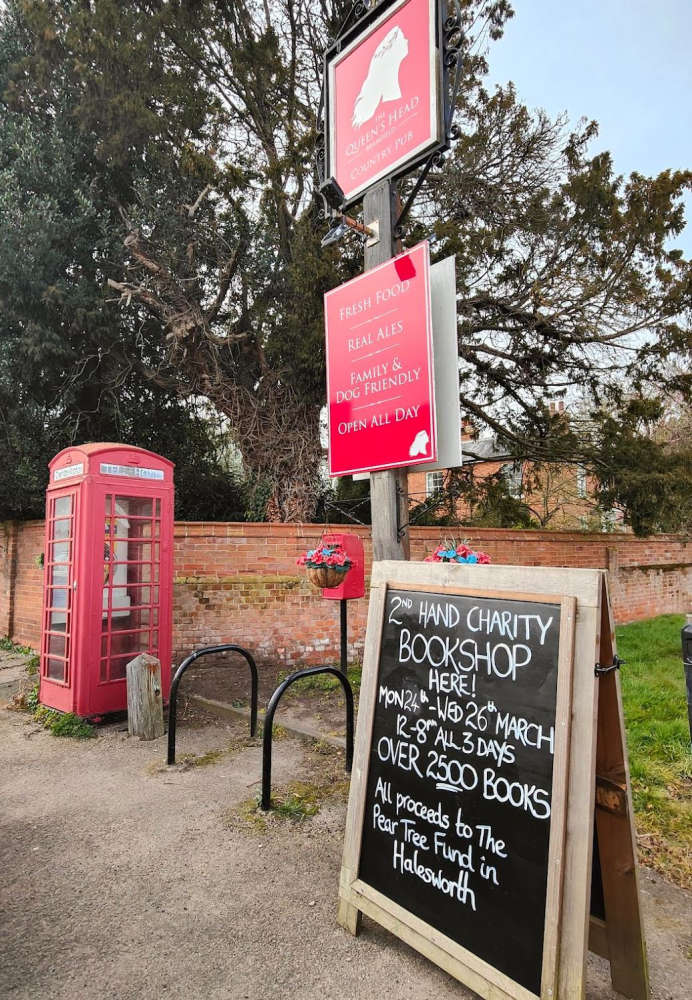
More than 300 silver coins that are almost a thousand years old, have been discovered at Sizewell.
During work for Sizewell C, archaeologists uncovered a lead and cloth package containing 321 silver coins in mint condition dating to the 11th century.
Experts say the discovery provides a look into the social and political upheaval at the time – and provides further evidence of regime change, following the coronation of Edward the Confessor in 1042.
Sizewell C’s archaeology partner, Oxford Cotswold Archaeology (OCA), has discovered a historically significant hoard of over 300 mint-condition silver coins near the site of the future nuclear power station.
During excavations for Sizewell C, which is under construction on the Suffolk coast, archaeologists uncovered a lead and cloth package containing 321 silver coins in mint condition dating to the 11th century.
The small lead bundle, barely bigger than a Cornish pasty (and therefore referred to as ‘the pasty’ by archaeologists),with the bundle that may have been the savings pot of a local figure, who might have feared the impacts of regime change and decided to bury their wealth as a precaution.
Alexander Bliss, Coin Specialist at OCA, said: “This new coin hoard provides us with valuable insight into the rich historical backdrop of this period, adding to the evidence that Edward the Confessor’s accession to the English throne was marked by a degree of uncertainty and concern within wider society.
“Analysing this new coin hoard has been a wholly collaborative effort, involving valuable input from multiple specialists and project partners in the fields of numismatics, finds and conservation. To play a small part in bringing its story to life has been an honour and a privilege.”
The hoard, carefully wrapped in cloth and lead, features coins minted between 1036 and 1044 during the reigns of Harold I, Harthacnut, and Edward the Confessor. Though a large proportion of the coins were minted in London, many coins were struck at other locations, including Thetford, Norwich, Ipswich, Lincoln and Stamford. Some coins came from smaller mints, such as Langport and Axbridge in southwestern England, which makes them quite rare.
While the hoard represents a substantial amount of money to most people at the time, it likely belonged to an individual of middling status, rather than somebody of very high status or national importance. The collection was probably a savings pot by a person of local influence and at the time it would have been approximate to the value of a small herd of cows, according to OCA experts.
Andrew Pegg, Archaeologist at OCA, who discovered the coins, said: “The Pasty, as it was immediately and affectionately named for obvious reasons, was a true privilege to find. I was shaking when I first unearthed it, seeing a single coin edge peeking at me! A perfect archaeological time capsule. The information we are learning from it is stunning and I’m so proud to have added to the history of my own little part of Suffolk.”
The mid-11th century in England was a turbulent period of uncertainty and shifting allegiances. Following over 25 years of rule by first the Danish king Cnut and then his sons Harold and Harthacnut, Edward the Confessor was crowned in 1042. This event restored the House of Wessex to the throne of England.
Regime change may well have created a degree of uncertainty and concern amongst the wider population. In particular, some of the wealthier individuals associated with the previous regime were exiled or had property confiscated in the aftermath of Edward’s coronation. The owner of the coin hoard might have feared the repercussions of the regime change and decided to bury their wealth as safeguard, aiming to retrieve it at a later date.
We might never know with certainty why this little treasure was never retrieved. The owner may have been prevented from returning to the location for various reasons, died before they could retrieve their savings, or, alternatively, they were unable to relocate the exact spot they were buried at.
Archaeology is a significant part of the construction process of Sizewell C, which is developing at pace on the Suffolk coast and which will deliver clean energy to around six million homes.
Numerous finds have been made at the development site, including discoveries of World War Two artefacts which highlight the importance of Suffolk during the war effort.

Damian Leydon, Site Delivery Director at Sizewell C, said: “The discovery of the 11th-century coin hoard is an extraordinary find. Archaeology is an important step in the Sizewell C project, helping us understand what lies beneath the ground before construction begins. This project provides a rare and fascinating glimpse into Suffolk’s rich history, deepening our understanding of this part of Britain. In partnership with Oxford Cotswold Archaeology, we plan to make these discoveries as accessible to the public as possible.”

 Suffolk Author's First Book Published
Suffolk Author's First Book Published
 Suffolk's Record Breaking Sunny March
Suffolk's Record Breaking Sunny March
 Suffolk Police Highlight Criminal Road Use
Suffolk Police Highlight Criminal Road Use
 Work Complete on Lowestoft's Nexus Development
Work Complete on Lowestoft's Nexus Development
 Help Design Saxmundham Park
Help Design Saxmundham Park
 Latest on Missing Framlingham Man
Latest on Missing Framlingham Man
 90 Mile Charity Coastal Walk Completed in Lowestoft
90 Mile Charity Coastal Walk Completed in Lowestoft
 Bramfield's 'Pop Up' Book Shop Raises Thousands
Bramfield's 'Pop Up' Book Shop Raises Thousands